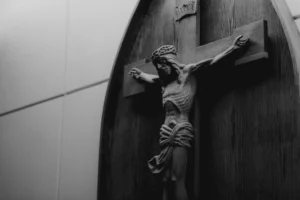“Why is there suffering?” is a hardy perennial among philosophical questions. And the question goes beyond simple philosophical speculation because behind it lurks another question: “Why do I suffer?”
After all, we reason, I’ve made a profession of faith in Christ. He suffered, died for my sins, and rose again — so God isn’t punishing me. I’ve been adopted into God’s family and am a loved child — so God hasn’t deserted me. So why do I suffer?
You’re not going to like my answer.
Often the reason we suffer (there are exceptions) is that we need to suffer. And the place of suffering in the Christian life is the theme of the second book of Dante’s Divine Comedy, Purgatory.
Purgatory in Roman Catholic teaching is the place where the saved go after death to purge themselves of residual sin and prepare for Heaven. As a Protestant writing about Purgatory, let me begin by setting this in context.
The Bible clearly states that we must be holy for “without holiness no one will see the Lord” (Heb. 12:14b). The proper goal of the Christian life is growth in holiness, seeing our characters conform more and more to the character of Jesus. The work by which the Holy Spirit makes us holy is called sanctification. And while sanctification is the Spirit’s work, we, as even a cursory reading of Romans 12-15 or Ephesians 4-6 makes clear, are active in the process of purging sin and embracing holy living.
How does that process take place? Often — maybe most often — God makes us holy through suffering. Peter wrote that “since Christ suffered in his body, arm yourselves also with the same attitude, because he who has suffered in his body is done with sin” (1 Peter 4:1). The letter to the Hebrews tells us that God’s discipline, something that inevitably causes suffering, is a mark of our adoption (Hebrews 12:5-11). Beyond that it says that even Jesus, the Divine Son of God “learned obedience from what he suffered” (Hebrews 5:8).
Protestants see the process of sanctification as something that continues in this world till our physical death when we are translated to glory. The Roman Catholic doctrine of Purgatory says that whatever growth in holiness we lacked in this life, we will willingly perfect in Purgatory before entering into the full life with God in Heaven.
I take Dante’s Purgatory, therefore, as an allegory about sanctification and suffering. In telling his story, Dante gives us a vision of suffering as an instrument of divine mercy. And one need not be a Roman Catholic or believe in a literal Purgatory to appreciate his vision.
The souls in Purgatory are saved. They are without any question of a doubt going to Heaven and this makes their suffering radically different from the suffering Dante witnessed in Hell.
As the damned arrive in Hell they pass through a gate proclaiming, “Lay down all hope you that go in by me” (Hell III.9). Then, crowded together, but in solitary isolation, they ride across the river Acheron to face the eternal suffering — a wallowing in their sin — that they have both desired and feared.
In Purgatory suffering is as physically painful as it is in Hell, but since the duration is limited and the purpose is different everything is different. This is temporary suffering for cleansing, not eternal suffering for judgment.
So as Dante waits on the shore at the base of Purgatory — a great mountain — a ship of the saved arrived singing a hymn and “all with one motion, leapt upon the strand” (Purgatory II.50). Hell is a place of isolation; Purgatory like Heaven is a place of fellowship. Hell is a dark and dismal pit; Purgatory is a bright, joyful mountain glistening in the sun and alive with prayers and the voices of angels. It is the place:
Where human spirits purge themselves, and train
To leap up into joy celestial.Purgatory I.5-6
Dante’s Purgatory is divided into seven great ledges or cornices each reserved for the purging of one of the seven deadly sins: pride, envy, wrath, sloth, coveting, gluttony, and lust. The seven deadly sins are not sins as we typically think of sins, that is, evil thoughts, words, or deeds. Instead, they are the branches that connect the root of sin, our fallen human nature, with the fruits of sin, evil thoughts, words, and deeds.
Adultery, for example, is a sin. It is a sin that may arise out of lust, but can just as easily arise out of one of the other deadly sins. For example,
- Pride — I am entitled to whatever I want and others are tools. Today I want sex.
- Wrath — I can use sex to get back at others: my partner, my partner’s spouse, my spouse, my parents, or my church.
- Covetousness — I want what God has providentially and wisely given to someone else.
Strange to say, in each case the problem is, of all things, love. Each of the seven deadly sins is an example of love gone wrong.
We typically make the assumption that if love motivates some action, the action must be good. Dante isn’t convinced. Love, he argues, causes a great deal of damage when it is misdirected or disordered.
Jesus said there were two great commandments. We are to love God and love our neighbors as we love ourselves (Mark 12:29-31). The seven deadly sins are the antithesis of these commandments. Pride, envy, and wrath are ways in which we love our neighbor’s harm. Sloth is such a defective love that cares for nothing at all. Coveting, gluttony, and lust are each love of secondary goods, ceding the center of our lives that belongs to God and neighbor to lesser things. As Ralph C. Wood has written, “No one can live without loving, but loving the wrong thing at the wrong time or for the wrong reasons produces most of the world’s wretchedness.”
Through sanctification God untwists our love and reorients it to himself and to our neighbor’s good: love’s proper objects. Dante places five elements on each cornice to aid in cleansing sin, that is, in reorienting love: suffering that matches the sin, examples of the sin and its corresponding virtue, a prayer said by the sufferers, and a Beatitude from Matthew 5:3-12.
The proud, for example, who lifted their heads high and looked down at others carry enormous weights on their backs. These bend them over so that their faces are bowed to the ground. What more fitting way to break pride than with a weight of humility?
On the walls of the cornice of pride are carved examples of humility beginning with the Annunciation as Mary tells the angel, “Behold, I am the Lord’s servant” (Luke 1:38). On the pavement, by contrast, are images of the sin: proud King Saul and King Rehoboam from the Old Testament; the city of Troy from Classical antiquity. The sufferers, bowed down contemplating pride and humility, pray the Lord’s Prayer saying, “Thy Kingdom come, Thy will be done.” And so they suffer patiently, held to the task by their desire to hear the words, “Blessed are the poor is spirit, for theirs is the Kingdom of Heaven,” and to be free from pride forever.
Humble actions, meditation on the damage done by pride and the good done through humility, along with prayers that assault pride comprise a practical program for putting that sin to death in our lives. But since we won’t typically take up such a program willingly, God sends us suffering to force our sin into the light and speed us on our way toward holiness.
Finally Dante climbs to the top of Mount Purgatory and there finds the nearly deserted Garden of Eden. Virgil, his guide through Hell and up Mount Purgatory leaves. What is to come is beyond earthly reason and Virgil can take him no further. Holy desire now leads him in the person of Beatrice who represents all that is good, true, and beautiful.
In the garden, his sins cleansed, Dante mourns his sin.
“Things transitory, with their false delight,”
Weeping said I, “enticed my steps aside,
Soon as your face was hidden from my sight.”Purgatory XXXI.34-36
Dorothy L. Sayers comments:
… not until the state of innocence has been recovered can sin be apprehended with its full horror. So long as any taint of sinfulness remains, there is always something in the soul that still assents to sin; only when the last, lingering vestige of unconscious assent has been purged away can one see one’s own sin as it appears to God — as something unspeakably vile and hideous.p. 319
And so the apostle Paul, late in life and well along the path toward holiness told Timothy, “Christ Jesus came into the world to save sinners — of whom I am [present tense] the worst” (1 Timothy 1:15). With growth in Christ-likeness comes sharper vision to see the contrast between our sin and the holiness of God.
Burdened by his sin, Dante drinks from two streams. First, he drinks from the Water of Oblivion and all memory of evil and of sin vanishes. Then he drinks from the Water of Remembrance. These waters “restore remembrance of the sin, but only as an historical fact and as the occasion of grace and blessedness” (Sayers, Purgatory, p. 68). In this way the power of sin and evil is completely broken and Dante, led by the desire for the good, true, and beautiful, is prepared for his journey to Heaven.
How prepared am I? How prepared will I be at death? Dante’s Purgatory challenges us to consider God’s plan to purge sin from our lives and make us holy. Suffering — much to our dismay — is part of the plan.
Suffering is a fact of life in this world. We can suffer like the souls in Hell as though assailed by irrational or malevolent forces or we can suffer like the souls on Mount Purgatory knowing that “our light and momentary troubles are achieving for us an eternal glory that far outweighs them all” (2 Corinthians 4:17). In every case, the choice is ours.
Copyright 2007 James Tonkowich. All rights reserved.











